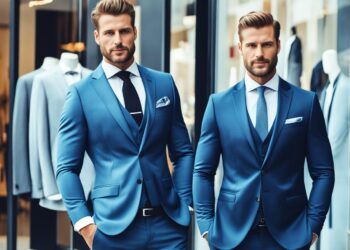Did you know that the fashion industry is responsible for 10% of global greenhouse gas emissions and contributes to the alarming problem of textile waste? But a revolution is underway, and it’s being led by the embrace of recycled attire garments (RAG) – a sustainable solution that is transforming the industry. Welcome to the rag revolution, where fashion innovation and eco-friendly practices are paving the way for a more sustainable future.
The rag revolution is at the forefront of the sustainable fashion movement, offering a innovative solution to the environmental challenges posed by fast fashion. This article delves into the key aspects of the rag revolution, including the benefits of conscious consumerism, the environmental impact of fast fashion, and the process of recycling and upcycling clothing. We’ll also highlight the leading players in the recycled fashion industry and explore the future of this eco-friendly trend.
Key Takeaways
- The fashion industry is a major contributor to global greenhouse gas emissions and textile waste.
- The rag revolution embraces the use of recycled attire garments (RAG) to address these environmental challenges.
- Conscious consumerism and fashion mindfulness are driving the rise of sustainable fashion practices.
- Recycling and upcycling clothing offers numerous benefits, including reducing environmental impact and creating unique, stylish pieces.
- Leading brands in the recycled fashion industry are pioneering innovative approaches to sustainable sourcing and design.
The Rise of Sustainable Fashion
The fashion industry is undergoing a remarkable transformation, driven by the growing trend of sustainable fashion and conscious consumerism. According to thredUP’s 2021 Fashion Resale Market and Trend Report, a staggering 70% of shoppers now feel that addressing climate change is a vital concern. This heightened awareness has led to an increased focus on more fashion mindfulness and sustainable practices within the industry, such as thrifting, repairing, and donating garments.
Environmental Impact of Fast Fashion
The environmental impact of fast fashion has become a pressing issue, with the industry responsible for a significant portion of global greenhouse gas emissions, water consumption, and textile waste. The linear “take-make-waste” model of fast fashion has proven to be unsustainable, prompting a shift towards more circular and recycling and reusing clothing practices.
Benefits of Recycling and Reusing Clothing
The benefits of recycling and reusing clothing are numerous, both for the environment and for conscious consumers. By reducing the demand for new textile production, recycled clothing helps to lower the environmental impact of the fashion industry, preventing the emission of greenhouse gases, the consumption of water, and the use of pesticides and other harmful chemicals. Additionally, the embrace of recycled attire garments (RAG) offers unique and stylish fashion choices, as well as cost-effective alternatives to traditional fast fashion.
| Sustainable Fashion Practices | Benefits |
|---|---|
| Thrifting | Reduces textile waste, promotes circular economy |
| Repairing Garments | Extends the lifespan of clothing, reduces environmental impact |
| Donating Clothes | Diverts textiles from landfills, supports charitable causes |
| Renting/Swapping Clothes | Encourages a sharing economy, reduces overconsumption |
Rag Revolution: Embracing Recycled Attire Garments
The rag revolution is a movement that embraces the use of recycled attire garments (RAG) to address the environmental challenges posed by the fashion industry. RAG involves the process of transforming discarded textiles into stylish, eco-friendly apparel, providing a sustainable alternative to traditional fast fashion.
What is Rag Revolution?
The rag revolution is a growing trend in the fashion industry that promotes the use of recycled attire garments (RAG) as a means to reduce the environmental impact of clothing production. This movement encourages consumers and fashion brands to embrace the concept of recycling and upcycling clothing, transforming discarded textiles into new, fashionable pieces.
The Process of Recycling and Upcycling Clothing
The process of recycling and upcycling clothing involves several steps to transform discarded textiles into new, sustainable fashion items. First, the used garments are collected from various sources, such as thrift stores, charity organizations, and consumer donations. These textiles are then sorted, cleaned, and processed to remove any impurities or damage. The recycled materials are then repurposed and transformed into new clothing, accessories, or home goods through innovative design techniques, such as dyeing, printing, or reconstructing the fabrics.
The result of this process is a collection of unique, recycled attire garments that not only reduce textile waste but also offer consumers a more sustainable and environmentally-friendly fashion choice. By embracing the rag revolution, fashion brands and consumers can play a crucial role in reducing the environmental impact of the industry and promoting a more circular economy.
Key Players in the Recycled Fashion Industry
The recycled fashion industry is home to several innovative brands that are leading the rag revolution. Among the key players spearheading this transformation are Urban Renewal, RE/DONE, and Antiform.
Urban Renewal by Urban Outfitters
Urban Renewal, a brand by Urban Outfitters, is known for its commitment to sustainable sourcing and creative repurposing of used clothing. The brand collects garments from various sources, including store returns and secondhand items, and transforms them into unique, fashionable pieces through dyeing, painting, and other design techniques. By breathing new life into discarded textiles, Urban Renewal exemplifies the urban renewal movement within the key players in recycled fashion.
RE/DONE: Upcycling Vintage Denim
RE/DONE, a sustainable fashion brand, has gained recognition for its innovative approach to upcycling vintage denim. The company salvages old jeans and gives them a new lease on life, transforming them into modern, high-quality pieces that capture the essence of timeless denim. This focus on upcycling vintage denim positions RE/DONE as a leader in the recycled fashion industry, addressing the environmental impact of fast fashion while offering stylish and unique clothing options.
Antiform: Sustainable Knitwear
Antiform, a British sustainable fashion label, has carved out a niche in the recycled fashion industry with its commitment to producing high-quality, eco-friendly knitwear. The brand sources deadstock yarns and repurposed fibers to create contemporary, long-lasting garments that prioritize sustainability without compromising on style. Antiform’s focus on sustainable knitwear exemplifies the breadth of innovation within the key players in recycled fashion.
The Benefits of Recycled Clothing
Embracing recycled clothing offers a multitude of benefits, both for the environment and for consumers. By reducing the demand for new textile production, recycled clothing helps to lower the environmental impact of the fashion industry, preventing the emission of greenhouse gases, the consumption of water, and the use of pesticides and other harmful chemicals.
Environmental Impact Reduction
The production of new clothing, especially from virgin materials, is a resource-intensive process that takes a significant toll on the environment. Recycled clothing, on the other hand, reduces the environmental impact by diverting textile waste from landfills and incineration, conserving natural resources, and minimizing the carbon footprint associated with the fashion industry.
Unique and Stylish Pieces
Recycled clothing pieces often have a unique charm and character, as they are transformed from discarded garments into one-of-a-kind, stylish fashion items. This allows consumers to express their personal style and individuality while contributing to a more sustainable fashion ecosystem.
Cost-Effective Fashion Choices
In addition to the environmental benefits, recycled clothing can also be a cost-effective fashion choice for consumers. By repurposing and upcycling existing textiles, recycled clothing brands are often able to offer their products at more affordable prices, making sustainable fashion accessible to a wider audience.
The Future of Recycled Fashion
The future of recycled fashion is brimming with promise, as the industry continues to embrace the principles of a circular fashion economy. This shift towards a more sustainable, closed-loop system is being further supported by the growth of the sharing economy, where consumers can rent, swap, or resell their clothing, extending the lifespan of garments.
Circular Fashion and the Sharing Economy
The concept of circular fashion, where products are designed for longevity, reuse, and recycling, is gaining traction among both fashion brands and conscious consumers. This approach not only reduces textile waste but also encourages a more mindful relationship with clothing. The sharing economy, where platforms like Rent the Runway and ThredUp facilitate the renting, swapping, and reselling of pre-owned garments, is further amplifying the circular fashion movement.
Technological Advancements in Textile Recycling
Alongside the growth of the circular fashion and sharing economy, technological advancements in textile recycling are also shaping the future of recycled fashion. Innovative processes, such as chemical recycling and automated sorting, are making it easier to transform discarded textiles into high-quality, usable materials. These developments are not only improving the efficiency of recycling but also expanding the range of clothing that can be given a second life.
Sourcing Recycled Attire Garments
Consumers interested in embracing the rag revolution and incorporating recycled attire garments (RAG) into their wardrobes have several options for sourcing these sustainable fashion items. From thrift stores and charity organizations to online resale platforms and wholesale recycled clothing suppliers, the rag revolution has made it easier than ever to find unique, eco-friendly fashion pieces.
Thrift Stores and Charity Organizations
Thrift stores and charity organizations are prime destinations for discovering pre-owned, recycled attire garments. These establishments often receive a wide variety of donated clothing, accessories, and household items, providing a treasure trove of opportunities to uncover one-of-a-kind fashion finds. By shopping at thrift stores and supporting local charity organizations, consumers can directly contribute to the circular fashion movement and reduce textile waste.
Online Resale Platforms
The rise of online resale platforms has revolutionized the way consumers access recycled attire garments. Websites like Poshmark, ThredUp, and Depop allow individuals to buy and sell pre-owned clothing, making it easier than ever to find unique, sustainable fashion pieces. These platforms often feature a diverse selection of brands, styles, and sizes, catering to a wide range of personal preferences and fashion sensibilities.
Wholesale Recycled Clothing Suppliers
For fashion brands and businesses looking to incorporate recycled attire garments into their offerings, wholesale recycled clothing suppliers are an invaluable resource. These specialized vendors work directly with textile recyclers and upcycling experts to source high-quality, sustainable fabrics and garments. By tapping into these wholesale channels, fashion brands can expand their sustainable product lines and cater to the growing demand for eco-friendly fashion.
Conclusion
The rag revolution is a transformative movement that is reshaping the fashion industry, offering a sustainable solution to the environmental challenges posed by fast fashion. By embracing the use of recycled attire garments (RAG), fashion brands and consumers are taking a crucial step towards reducing their carbon footprint, diverting textile waste from landfills, and promoting a more circular economy.
As the fashion industry continues to evolve, the rag revolution serves as a beacon of hope, demonstrating that sustainable practices can be both fashionable and environmentally responsible. Through the adoption of recycled clothing, brands and individuals are contributing to a more sustainable future, where the concept of waste is reimagined and the principles of a circular economy take precedence.
The rag revolution is not just a trend, but a fundamental shift in the way we approach fashion. By supporting and participating in this movement, we can collectively drive the fashion industry towards a more sustainable and eco-friendly future, where recycled attire garments become the norm rather than the exception. Together, we can continue to revolutionize the fashion industry and create a more sustainable and responsible world for generations to come.
FAQ
What is the rag revolution?
The rag revolution is a movement that embraces the use of recycled attire garments (RAG) to address the environmental challenges posed by the fashion industry. RAG involves the process of transforming discarded textiles into stylish, eco-friendly apparel, providing a sustainable alternative to traditional fast fashion.
What are the benefits of embracing recycled clothing?
Embracing recycled clothing offers a multitude of benefits, both for the environment and for consumers. By reducing the demand for new textile production, recycled clothing helps to lower the environmental impact of the fashion industry, preventing the emission of greenhouse gases, the consumption of water, and the use of pesticides and other harmful chemicals.
What is the future of recycled fashion?
The future of recycled fashion is promising, as the industry continues to evolve and embrace the principles of a circular economy. The concept of circular fashion, where products are designed for longevity, reuse, and recycling, is gaining traction. This shift towards a more sustainable, closed-loop system is being further supported by the growth of the sharing economy, where consumers can rent, swap, or resell their clothing, extending the lifespan of garments.
Where can I source recycled attire garments (RAG)?
Consumers interested in embracing the rag revolution and incorporating recycled attire garments (RAG) into their wardrobes have several options for sourcing these sustainable fashion items, including thrift stores, charity organizations, online resale platforms, and wholesale recycled clothing suppliers.
What are some leading brands in the recycled fashion industry?
The recycled fashion industry is home to several innovative brands that are leading the rag revolution, such as Urban Renewal by Urban Outfitters, RE/DONE (upcycling vintage denim), and Antiform (sustainable knitwear).



































